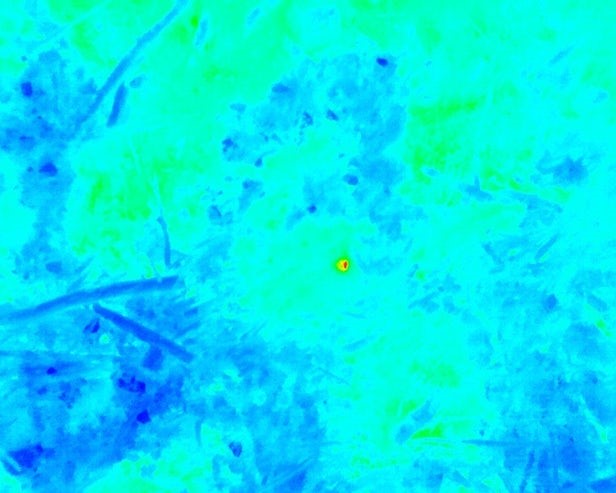- Scientists tested the capacity of small drones equipped with thermal cameras to survey European nightjar nests in areas where construction or logging is planned.
- Nightjars use camouflage and cryptic behavior to avoid predation, which makes them difficult to observe on the ground and avoid disturbing, as required by U.K. law. Finding a faster, more cost-effective survey method to detect their presence could help forestry and construction managers comply with regulations more efficiently.
- The scientists say that the drone-thermal camera combination would be suitable for surveying other open-country wildlife, and could be aided by automated analysis of the thermal signatures of target species.
Forestry and construction companies in the U.K. are required to ensure their work doesn’t endanger protected species, including the nesting sites of protected bird species. In the case of the European nightjar (Caprimulgus europaeus), however, the bird’s highly effective camouflage makes it difficult to detect inside a patch of vegetation.
So researchers from Cardiff University in Wales have turned to thermal-sensing cameras to locate nightjar nests as part of a recent pilot study.

“Nightjars are camouflaged to look just like a fallen log or dead wood,” lead author Mike Shewring, a Cardiff University Ph.D. student, said in a statement. “They nest on the ground and ‘sit tight’ when approached to avoid detection, which makes it nearly impossible to spot them during the day when they are inactive.”
Nightjars, as their name implies, are nocturnal, and the birds remain still if a person walks by, using their camouflage to avoid detection. Ecologists surveying planned logging or construction sites can easily miss seeing birds hiding within the vegetation. Moreover, walking among fallen trees while conducting ground nest surveys is costly, time-consuming, and potentially hazardous.
Shewring and colleagues recently tested the suitability of thermal cameras mounted on drones to detect nightjar nest sites as an alternative survey method. A drone-mounted camera can survey an area faster than a team of ground observers, potentially without disturbing the birds or their nests. Thermal-sensing cameras can find birds and other warm-bodied animals hidden within vegetation, even in the dark.

Shewring presented the preliminary findings of their pilot tests last month at the British Ecological Society’s annual conference.
The scientists took a series of thermal images by flying the drones over a tree plantation in Wales in areas where nightjar nests had been previously identified by radio tracking and direct observation.
They took the images at 10, 20, and 50 meters (33, 66, and 164 feet) above the ground at dawn, noon and dusk during the nightjar breeding season (between May and August).
The researchers were able to detect nightjars in their nests in the thermal images. Nightjars’ body temperatures run around 40 degrees Celsius (105 degrees Fahrenheit), which show up in the thermal images against the colder background of vegetation or soil. Not surprisingly, the birds’ outlines were more easily seen in images taken at cooler times of the day, when the temperature contrast was greatest.
The scientists found that images taken at 10 meters above the ground produced more useful images than those taken from higher up. Surveying with aerial images from known altitudes also allowed them to estimate the body size of the birds below to confirm the species, without getting too close.

To prevent workers from destroying nests, forest managers currently avoid areas around known nests or avoid forestry work altogether during the breeding season. The new findings suggest that drones could make the task of surveying nightjars faster, easier, more accurate and more cost-effective.
Shewring told Mongabay that surveying with drone-mounted thermal cameras could similarly be a cost-effective way to survey other ground-nesting bird species. He added that the method would work best in grasslands and other open-country habitats, rather than forests.
“We were conducting surveys in grassland up to one meter [3.3 feet] in height, and it worked well in this scenario,” Shewring said. “I would think the denser the vegetation and the more water it holds, the more this would mask the thermal signature, i.e. looking [for] nests at ground level through dense woodland canopy would unlikely be successful.”
“Our preliminary findings demonstrate the potential of drones for surveying nightjars during their breeding season, allowing forestry managers to locate nests more accurately and plan their works adequately,” project supervisor Robert Thomas said in the statement. “This methodology could also have wider applications, since it could technically be adapted to detect any warm-blooded species.”
The nightjars stayed put in their nests during the drone flights, a characteristic behavior these cryptic birds employ to avoid being detected by predators.

“We don’t know whether the nightjars perceived the drones as a predator,” Shewring said. “This would be interesting to explore in future studies to ensure that the sight and sound of drones don’t have any negative impacts on the birds’ stress levels or metabolism.”
In the meantime, Shewring said, the group will be further developing their software and analyses this year, to characterize in better detail the thermal signature of nightjar nests through additional drone flights and testing of automated analysis approaches. He added that they hope the forest managers, who funded the pilot study, will be able to begin using drones with thermal cameras in 2020 to inform how and when they program their activities.
FEEDBACK: Use this form to send a message to the editor of this post. If you want to post a public comment, you can do that at the bottom of the page.
